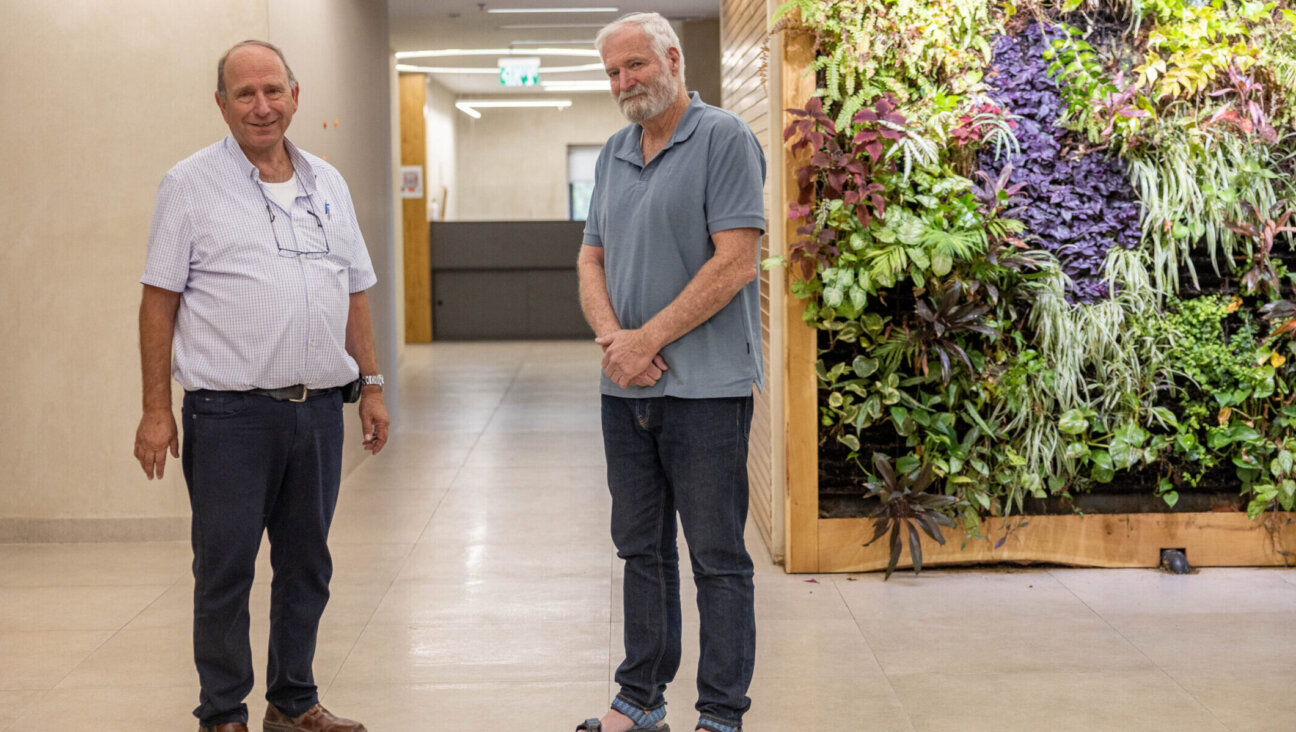Moms’ Plight Spurs Action By Agencies
Three years ago, Cathy Markowitz had it all together. A house in a Long Island suburb, an accountant husband and a steady day job at a doctor’s office that gave her plenty of time to spend with her three young sons.
Then her husband had a serious stroke. In the weeks that followed, Markowitz said that she discovered he had been leading a second life behind her back, filled with infidelities and drugs. After the ensuing divorce, the economic burden of the family fell squarely on Markowitz’s shoulders.
She began working at the doctor’s office seven days a week and picked up another job four nights a week. It still has not been enough to pull her family above the poverty line.
“It all came apart so fast,” said the 48-year-old Markowitz, still with a note of astonishment in her voice.
Markowitz is not as alone as she might seem. Interviews with Jewish social service experts, as well as the few available statistics, strongly suggest that single-parent families are one of the fastest-growing segments of the Jewish community, and also one of the most needy.
“We’re only seeing more of those families,” said Rhoda Margolis, director of clinical services at Jewish Family and Career Services of Atlanta. “More women are less willing to remain in emotionally and physically abusive households.”
While no national statistics exist, a Chicago demographic study in 2000 found that single-parent families were the second-fastest-growing type of Jewish household, after elderly households, and represented 17% of all Jewish households with children. Among all Americans, single-parent households increased by one-fourth during the 1990s and numbered 23% of all households with children in 2000, according to the U.S. Census.
The numbers of single mothers coming into Jewish family service agencies has risen particularly swiftly during the past two years, social-service agencies say.
Stephanie Coontz, author of “The Way We Really Are: Coming to Terms With America’s Changing Families,” said these anecdotes are in accord with historic patterns.
“They are beginning to see what we know historically,” Coontz said, “which is that there is an increase in the divorce rate and family pressures as economic pressures mount.”
The recently released National Jewish Population Study 2000-01 did not present data on the number of single-parent households nationally, but it did find that among those single-mother households surveyed, 8% were under the federal poverty line, in contrast to the 4% poverty rate among married households with children.
The number of single parents struggling economically is not fully reflected by the federal poverty line, many experts say, since the federal figure sets an unrealistically low benchmark unreflective of conditions in metropolitan areas where most Jews live. A Philadelphia Jewish federation study found that 41% of single-parent Jewish households were “lower income,” compared to 22% of households in the rest of the Jewish community.
For Markowitz, the disappearance of her husband’s income was crippling. On top of her two jobs, her 16- and 18-year-old sons have had to find work, and her 14-year-old will need to start chipping in as soon as he can. Family dinners are few and far between.
The Metropolitan Council on Jewish Poverty, a multimillion-dollar relief agency run by UJA-Federation of New York, has stepped in to provide Markowitz with desperately needed assistance in the form of a rent subsidy. But when the one-year grant is up, she is uncertain what she will do.
“It’s going to be a struggle,” she said. “I’ll have to be creative.”
Her daily struggle is not just a result of the loss of income. The divorce has also generated demands and pressures that did not exist when her husband was around.
“If they need shoes, they have to wait until I get paid,” Markowitz said. “They never knew those things. Everything was taken away from them.”
The stress on her oldest son was so great that he had to leave school for a few months. The therapy bills for him and his younger brothers have been a new and unexpected financial drain.
But Markowitz acknowledges that she was lucky in at least one respect. Because her three sons were old enough to take care of themselves, she has not had to deal with the challenge of finding child care, one of the greatest pressures on single families, according to most observers.
For single parents with younger children, holding down a job to support their children almost always requires an outside source of child care. This has become increasingly difficult during the past 10 years, when studies show that the cost of child care has roughly doubled. The average cost of day care for a 4-year-old is now higher than public college tuition in all but one state.
Child care has been a particularly volatile issue for families under the poverty line who have been affected by the 1996 welfare reforms, which shifted federal funds that used to provide financial aid for single mothers into job-training programs.
These changes have helped some single mothers enter the workforce, but advocates for the poor say that the low-income jobs available to these mothers often are not enough to cover the rising costs of child care.
New legislation recently passed by the House of Representatives and currently on the floor of the Senate would increase the work requirements for those receiving assistance and decrease the funds available for child care over the next five years.
Ellen Witman, co-director of the Washington office of the National Council of Jewish Women, says the problems with these new reforms are obvious.
“You require more women to go to work for more hours and you provide less child care,” Witman said. “You can figure out the problem from there.”
The rising price of child care has been an equally pressing concern for those above the official poverty line, who receive no aid, and these families frequently turn to the Jewish community for help.
In the San Francisco Bay Area, the number of families requesting scholarships for child care and tutoring has risen at least 300% in the last three years, according to Anita Friedman, executive director of the Jewish Family and Children’s Services of the Bay Area.
Because of the unique needs of single-parent families, and because of their swiftly increasing numbers, Jewish social-service providers say the Jewish community has been, on the whole, unprepared to meet the needs of single-parent families.
A 2002 demographic study by the UJA-Federation of New York found that only 26% of people seeking help for infant or child day care were able to find help at a Jewish service agency.
In a 1997 focus group for single mothers, conducted by the Philadelphia Jewish federation, one mother said: “I was absolutely shocked to find out that unless I was over 65 I wasn’t eligible for anything…. The agency that I dealt with really geared up to the elderly in the city…. I met all their income eligibilities and certainly the need was there, but I was surprised to hear that in terms of the younger population, there’s very little out there in terms of help.”
In New York, the city with the most extensive network of Jewish social-service agencies in the country, Markowitz found immediate support at the Metropolitan Council on Jewish Poverty, though for a restricted period of time.
In her local community of Baldwin, N.Y., though, the help was less forthcoming. At the synagogue where she was a longtime member, the rabbi gave her a few gift certificates to local restaurants when he heard of her situation. While she was waiting for the Metropolitan Council to step in with rent assistance, she got help from a local church where she had been directed by a friend.
Since then she has not returned to the synagogue much.
“I still get bills for membership. I don’t pay them,” she said. “I don’t think they would turn me away if I tried to go, but I don’t feel right there anymore.”
A message from our CEO & publisher Rachel Fishman Feddersen

I hope you appreciated this article. Before you go, I’d like to ask you to please support the Forward’s award-winning, nonprofit journalism during this critical time.
We’ve set a goal to raise $260,000 by December 31. That’s an ambitious goal, but one that will give us the resources we need to invest in the high quality news, opinion, analysis and cultural coverage that isn’t available anywhere else.
If you feel inspired to make an impact, now is the time to give something back. Join us as a member at your most generous level.
— Rachel Fishman Feddersen, Publisher and CEO






















